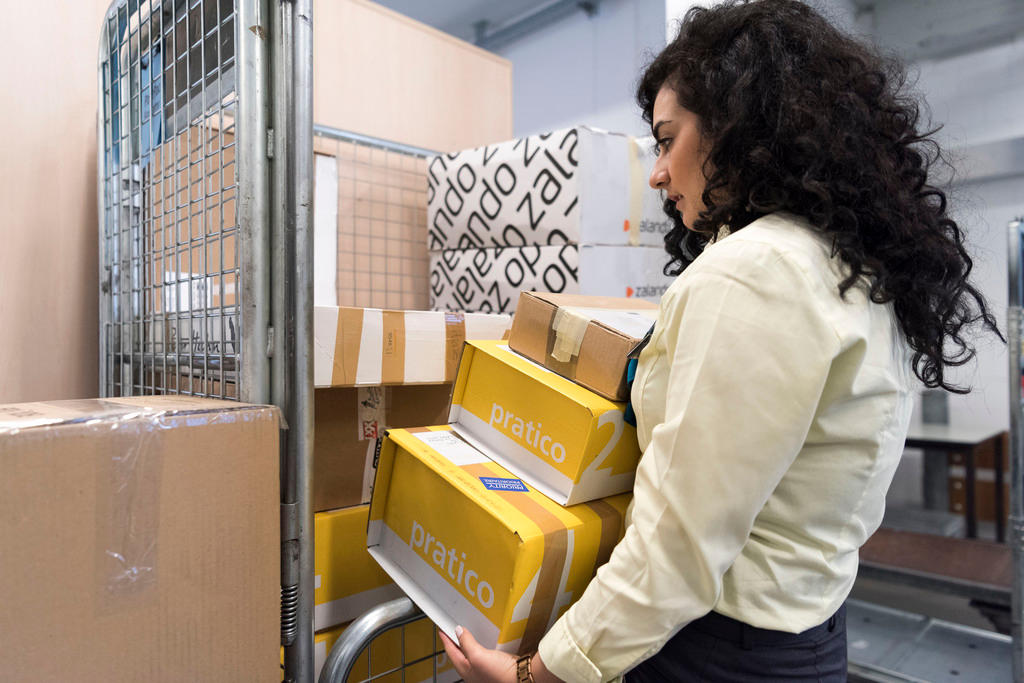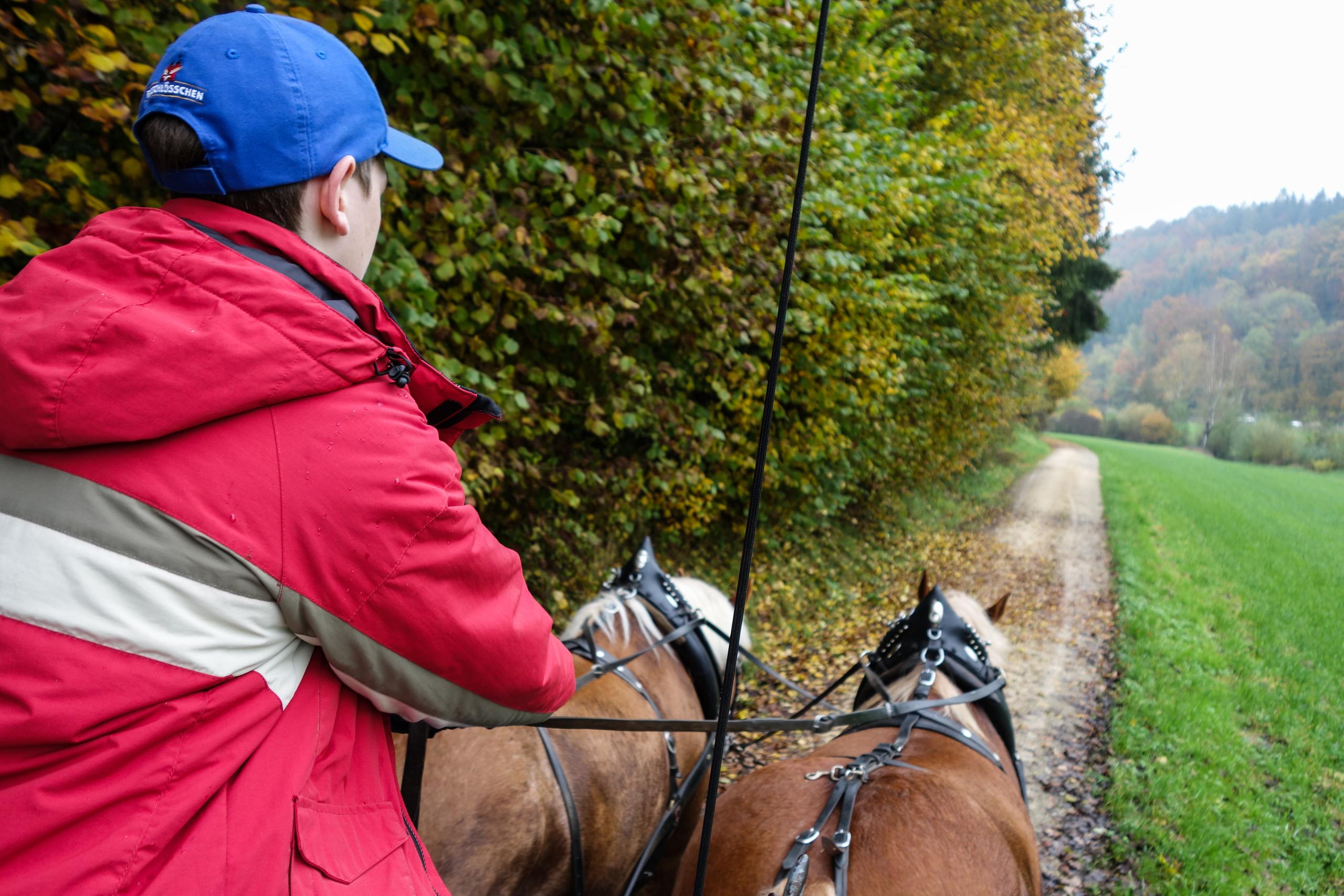Guaranteeing quality job training in Switzerland and the US

US President Donald Trump’s administration is in talks with Swiss leaders about bringing Swiss-style vocational training stateside. In part two of our report, we compare the different approaches to overseeing apprenticeships.
(Here’s part one examining the funding and wage situation as well as the number of apprentices in each country).
Questions or comments about Swiss job training? Leave them in the comments or post them on Twitter using the hashtag #SwissApprenticeship.External link External link
There are simply not enough apprenticeship positions available in the United States for high schools to advise vocational training as a large-scale option for their graduates, according to Nicholas Wyman, CEO of the US-based Institute for Workplace Skills and Innovation, in a recent commentaryExternal link for Forbes Magazine.
In his call for more apprenticeships in the US, Trump blamed the lack of available positions on over-regulation.
“We are removing federal restrictions that have prevented many different industries from creating apprenticeship programs,” he said.
His comments were specifically aimed at existing federally recognised apprenticeships, called Registered Apprenticeships, established by the National Apprenticeship ActExternal link of 1937. That law tasks the Department of Labor with setting and maintaining labor standards for apprenticeshipsExternal link while working with individual states to make sure they are upheld.
Robert Lerman, founder of the American Institute for Innovative Apprenticeship, pointed out in a piece for The HillExternal link that US companies and trade associations who want to offer apprenticeships must currently develop their own curriculum and submit them to state agencies for approval. This leads to uneven standards, since some states have stricter requirements than others, and Lerman claims that “an unknown number of apprentices” are working in positions not officially recognised by their state or the US Department of Labor.

More
Swiss-US meeting focuses on vocational education and jobs
“Ideally, the federal government would join with the private sector to create a public-private institution charged with developing and diffusing national occupational frameworks for apprenticeship,” he writes.
Public-private partnership
Switzerland has such a partnership between the federal government and trade associations that oversee curricula for all apprenticeships and review them every five years. An umbrella institution, known as SVIVET – the Swiss Federal Institute for Vocational Education and Training – trains instructors and lays out requirements they must meet before they can teach apprentices. It also has a Centre for the Development of Occupations, which supports cantons and trade associations with best practices.
Trump’s executive order calls for involving the private sector by revising standards and apprenticeship programmes together with so-called third parties. Those could include “trade and industry groups, companies, non-profit organizations, unions, and joint labor-management organizations”.
Suzi and Eric LeVine, who are working on building up Swiss-style apprenticeship opportunities in various US states after her time as US ambassador to Switzerland, welcome the executive order if it leads to goals for apprenticeships in specific sectors like the Swiss public-private partnership does.
“But if it becomes a hydra of credentials with everyone able to create different qualifications, it could be problematic,” warns Ambassador LeVine.
Government involvement
Generally, Switzerland’s federal government has a light touch when it comes to overseeing apprenticeship programmes. Its role is mostly making sure best practices get shared and it funds about 10% of nationwide costs. The rest of the bill is footed by cantons, and businesses take care of developing competencies for teaching and learning.
But the federal government does issue apprentices’ qualifications so they are recognised everywhere in the country. Together with trade associations, it defines and oversees some 230 professions ranging from plumbers to IT workers that all require an apprenticeship to achieve.

More
Apprenticeships require trust in teens
Both public and private-sector employers advertise apprenticeships every year depending on their needs, and seven out of every eight apprenticeship positions are offered by Swiss small and medium-sized enterprises (SMEs). Generally, students apply for those apprenticeships in their last year of secondary school, when they are about 15 years old, and work as apprentices for three or four years before earning their federally recognised qualification at age 19 or 20.
Swiss apprentices also spend time hitting the books, learning in the classroom at a public trade school a couple days a week while learning on the job the rest of the time. Those who earn their apprenticeship diplomas can also go on to attend public Universities of Applied Sciences to work towards higher qualifications such as Bachelor’s and Master’s degrees related to their area of expertise.
The LeVines think that option to go on to higher education offered by the Swiss apprenticeship system is what makes it a good fit for the United States.
“The Swiss model integrates permeability, it has more diversity and flexibility and we believe it’s much more palatable to the American desires for choice,” says Suzi LeVine.
She and her husband also argue that apprenticeship development in the United States must primarily take place on the state level and be driven by business, as in Switzerland where most of the funding and curriculum development comes from cantons and businesses within their borders.
“Apprenticeships in the US won’t be made or broken at the federal level,” says Eric LeVine.

More
How Swiss is Trump’s new ‘apprentice’?

In compliance with the JTI standards
More: SWI swissinfo.ch certified by the Journalism Trust Initiative






You can find an overview of ongoing debates with our journalists here. Please join us!
If you want to start a conversation about a topic raised in this article or want to report factual errors, email us at english@swissinfo.ch.